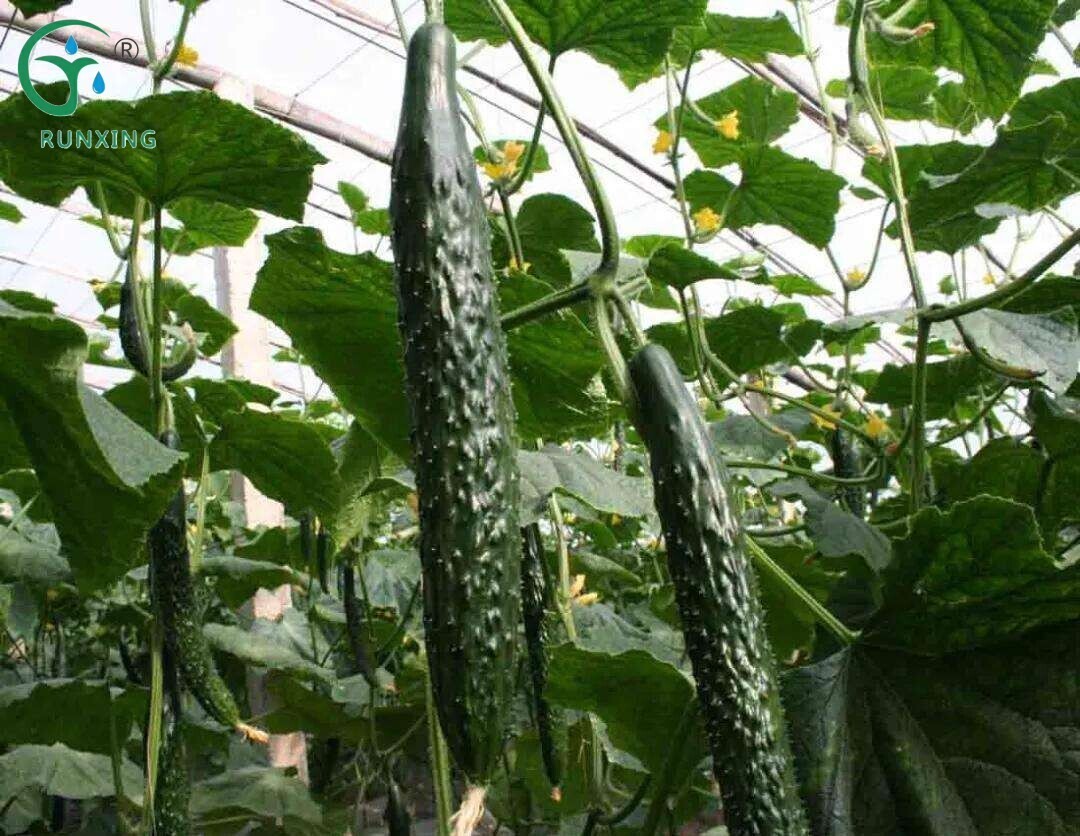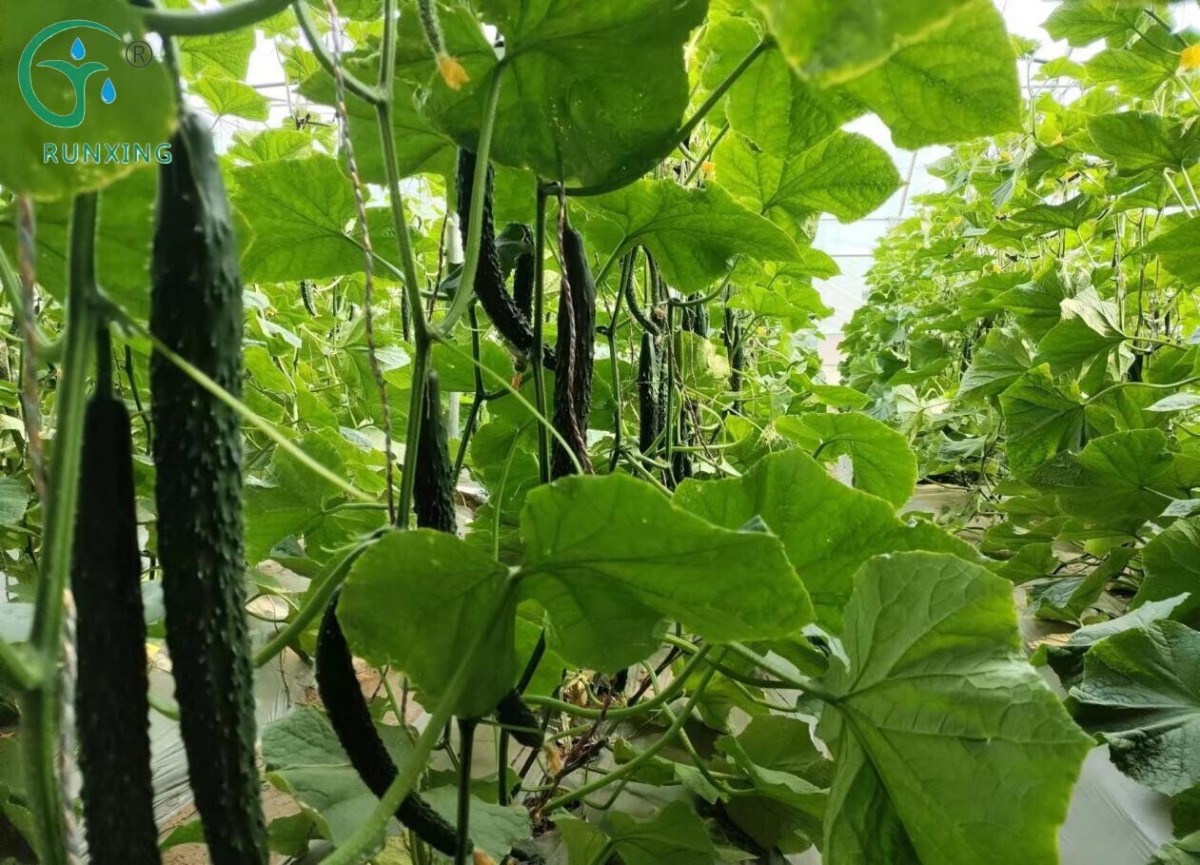South American Cucumber Cultivation: The Importance of Drip Irrigation and Cultivation Tips
In South America, cucumbers, as a common fruit and vegetable crop, have high demands for water and nutrients during cultivation, and require precise irrigation and fertilization. Therefore, the introduction of drip irrigation facilities is crucial for cucumber cultivation in South America. So, what drip irrigation equipment is required? How should it be laid out? And what cultivation tips can help us better grow cucumbers?

The Importance of Drip Irrigation and Required Equipment
Drip irrigation technology delivers water in the form of tiny droplets directly to the soil around the crop roots through a low-pressure piping system. This irrigation method effectively reduces water evaporation and deep leakage, improving water use efficiency. In South America, with its variable climate and precious water resources, drip irrigation facilities are particularly important.
Required Drip Irrigation Equipment:
Drip Irrigation Tubing: Choose thin-walled drip irrigation tape with dripper spacings of 20 to 40 centimeters and flow rates of 1.5 to 2.5 liters per hour to ensure water is delivered evenly and precisely to the cucumber roots.
Water Supply Hose: Connects the water source to the drip irrigation tubing to ensure a smooth flow of water.
T-Connectors and Water Pump: T-connectors are used to connect the water supply hose to the drip irrigation tubing, while the water pump provides the required water pressure for irrigation.
Fertilizer Injector (optional): If simultaneous irrigation and fertilization are desired, a fertilizer injector can be connected to dissolve soluble fertilizers in the water and deliver them along with the irrigation water to the cucumber roots.
Layout Method:
Before sowing or transplanting cucumber seedlings, lay the drip irrigation tubing on the soil surface or in shallow trenches, with the drip holes facing up and the end securely tied.
Use T-connectors to connect the water supply hose to the drip irrigation tubing, ensuring a tight connection without leakage.
Place the water supply pipe in an appropriate location, secure one end, and connect the other end to the water pump. After connecting the power supply, automatic irrigation can begin.
Cucumber Cultivation Tips
Variety Selection: Choose cucumber varieties suitable for local growth conditions in South America based on the climate and planting environment. Early-maturing varieties and those with strong disease resistance and stress tolerance are good choices.
Soil Preparation: Cucumbers prefer soil rich in organic matter, with good drainage and an appropriate pH level. Before sowing, conduct a soil texture analysis and apply an appropriate amount of organic fertilizer to improve soil structure.
Sowing and Seedling Management: Sow cucumber seeds in spring or summer, spreading them evenly on the prepared soil surface and then lightly covering them with a thin layer of soil. Keep the soil moist and increase light exposure to facilitate seed germination and seedling growth. When the seedlings reach a certain size, thin them out to retain healthy plants, spacing them about 30 to 40 centimeters apart.
Trellis Construction and Vine Management: Cucumbers are vine plants that require trellises or supports for climbing growth. Construct trellises during the seedling stage and set up horizontal wires or grids to provide adequate support space. As the cucumber plants begin to climb, regularly manage the vines to avoid tangling and crossing.
Pest and Disease Control: Regularly inspect cucumber plants for any signs of abnormalities or pests and diseases, and treat them promptly. Maintain proper ventilation and sunlight exposure for the plants to reduce humidity and help prevent the occurrence of some fungal diseases. For infected plants, promptly remove affected parts and spray with suitable organic pesticides.
Integrated Water and Fertilizer Management: When implementing integrated water and fertilizer management, scientifically select fertilizer types and ratios based on the needs of cucumbers at different growth stages. Irrigation and fertilization should be synchronized, with the drip irrigation system precisely controlling the amount and timing of fertilizer application to ensure nutrients are delivered directly to the crop roots.
Intelligent Management: With the development of the Internet of Things technology, intelligent management systems have been widely applied in integrated water and fertilizer management. By installing sensors to monitor soil moisture, nutrient content, and environmental parameters (such as temperature and humidity), combined with crop growth models, irrigation and fertilization plans can be automatically adjusted to achieve precise control of water and fertilizer and optimize resource allocation.

Conclusion
The introduction of drip irrigation facilities and the adoption of scientific cultivation tips are key to increasing cucumber yield, quality, and economic benefits in South America. By reasonably selecting drip irrigation equipment, carefully preparing the soil, scientifically sowing and managing, and applying intelligent management systems, we can achieve water-saving irrigation and integrated water and fertilizer management for cucumber cultivation, contributing to the development of modern agriculture.
If you have any needs, please contact us.
About Us
We are dedicated to offering innovative, water-saving, and labor-saving irrigation solutions for agriculture worldwide. Our focus on quality and continuous innovation drives the development and progress of the industry
LOGO
This stunning beach house property is a true oasis, nestled in a serene coastal community with direct access to the beach.
Opening Hours
Monday - Friday : 9AM to 5PM
Sunday: Closed
Closed during holidays
Contact
+18888888888
hezuo@eyingbao.com123 West Street, Melbourne Victoria 3000 Australia
